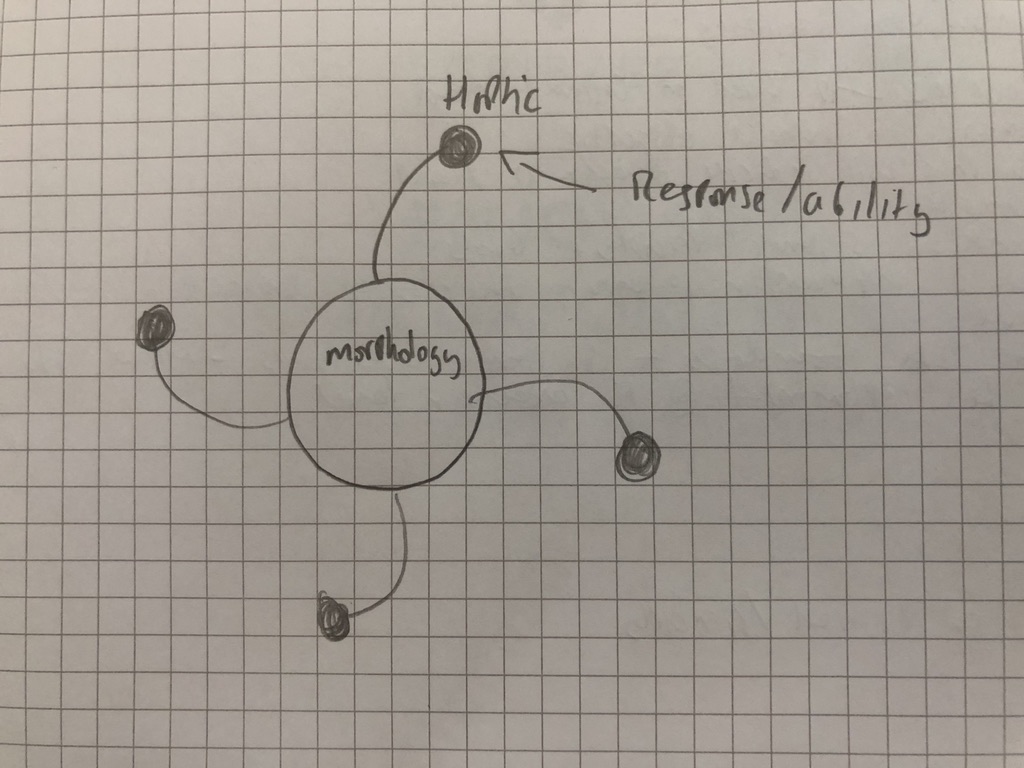Organisational haptics, morphologies and response|ability
3 min readWhile absentmindedly considering the nature of organisations, and how they are structured, I sketched the following diagram – which, on reflection, throws up some interesting questions.

My handwriting is probably unreadable, so I’ll translate. At the top we have the term ‘Haptic’, with the arrow pointing to the term ‘Response|ability’, finally, inside the circle, we have the term ‘morphology’.
But what is my doodle attempting to convey? At the time, I was thinking about organisational strategies and how they are commonly concerned with the internal structures of an organisation – defined here as morphology.
Now morphological strategies and structures can affect the organisation as a whole. They can even pre-dispose it to act or respond in specific ways – but these will always be in a recursive and internalised response.
A healthy organisation, of course, needs more than just healthy morphology. It must also be able to sense and respond to the world, to be able to change direction if you will. So, in my diagram, I’ve added the notion of haptic strategies.
A haptic strategy is a way an organisation senses the world around it. You’ll note, however, that although we may have large sensory apparatus, the conduits to the organisation are thin; this is to denote the difficulty in taking haptic feedback to the organisation as a whole.
Finally, we have the ability of the organisation to respond to or be responsive to the world. Channelling my inner Donna Haraway (2016), I’ve used the term response|ability – this is not just the ability to respond but also the responsibility of the organisation to the world. A responsibility that is achieved by making the organisation sensitive to the world – to increase its haptic potentialities.
Beyond the haptic potentialities, there is also the need to thicken the delicate haptic tendrils that extend into the world – allowing a more vibrant picture of how its strategies and actions are affecting and making the world around it.
So the question this raises is how we might make organisations that are more sensitive to the world, also how the haptic strategies and morphology can affect each other and the impacts that this can have on their respective abilities.
It’s not uncommon, for example, to see organisations whose morphology prevents their ability to respond to the rudimentary haptics they have in place. Or for the haptics purporting to be sensing the world instead to be merely detecting shifts in morphology.
Another, interesting observation this doodle throws up is that it is not enough to just sense – there is a systemic process at play too. The senses must exist, the senses must be able to feedback to the organisation, the morphology must be able to make sense of the sense – then the overall system must have response|ability.
The next step is to look into the various, techniques, practices, methodologies and strategies available to organisations and understand how they fit into this model. Do they help the organisation to sense, do they improve the morphological structures, do they help the organisation to respond more effectively.
These are all strategic questions, as they help us to plan or achieve our objectives (whatever they maybe). Still, it is not just a question of strategy; it’s the type of strategy that is needed at a given time or place: Morphological, Haptic, Systemic etc. and how they interact to provide an organisation with response|ability.
Haraway, D.J. (2016). Staying with the Trouble: Making Kin in the Chthulucene. Durham: Duke University Press

